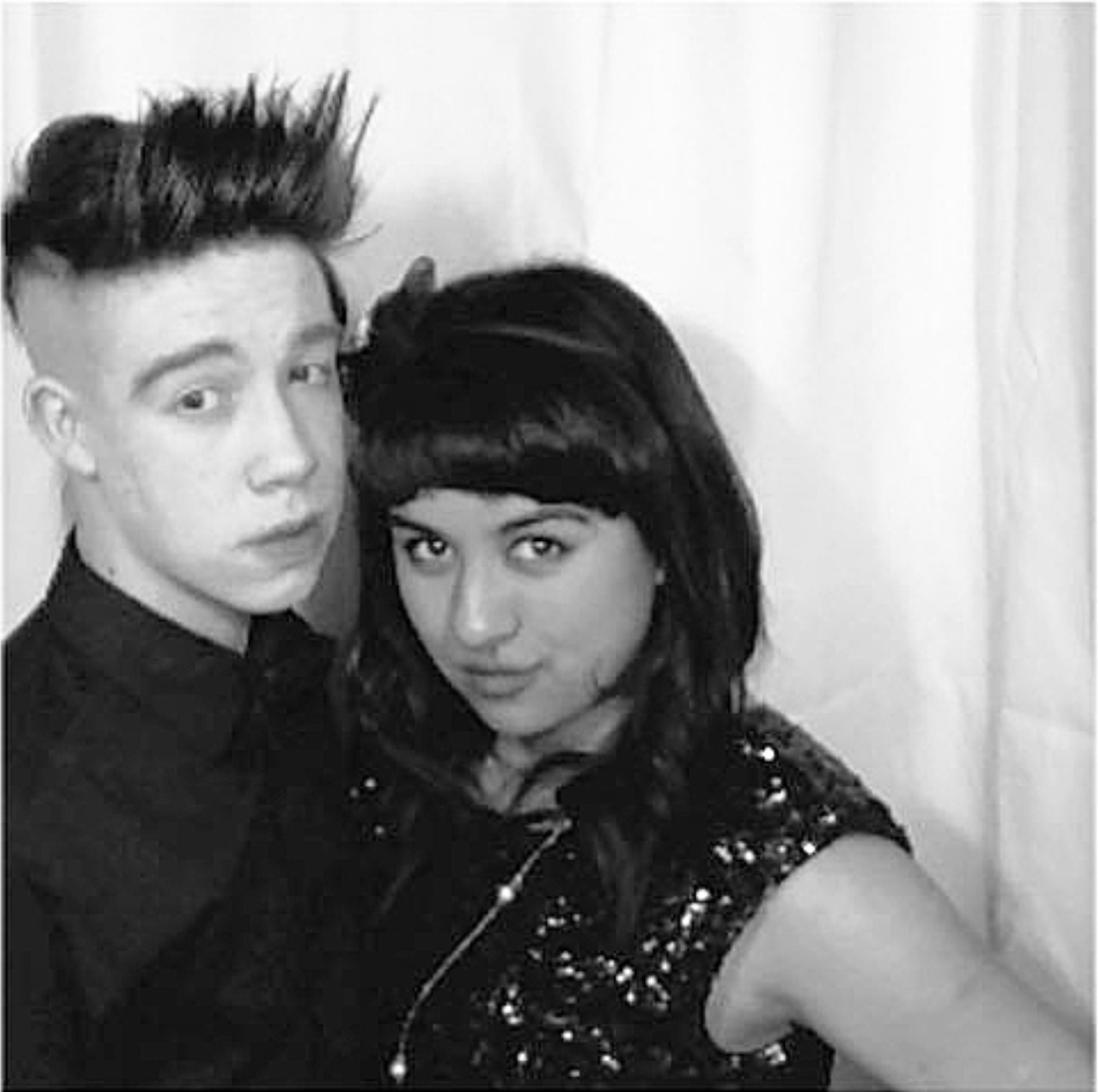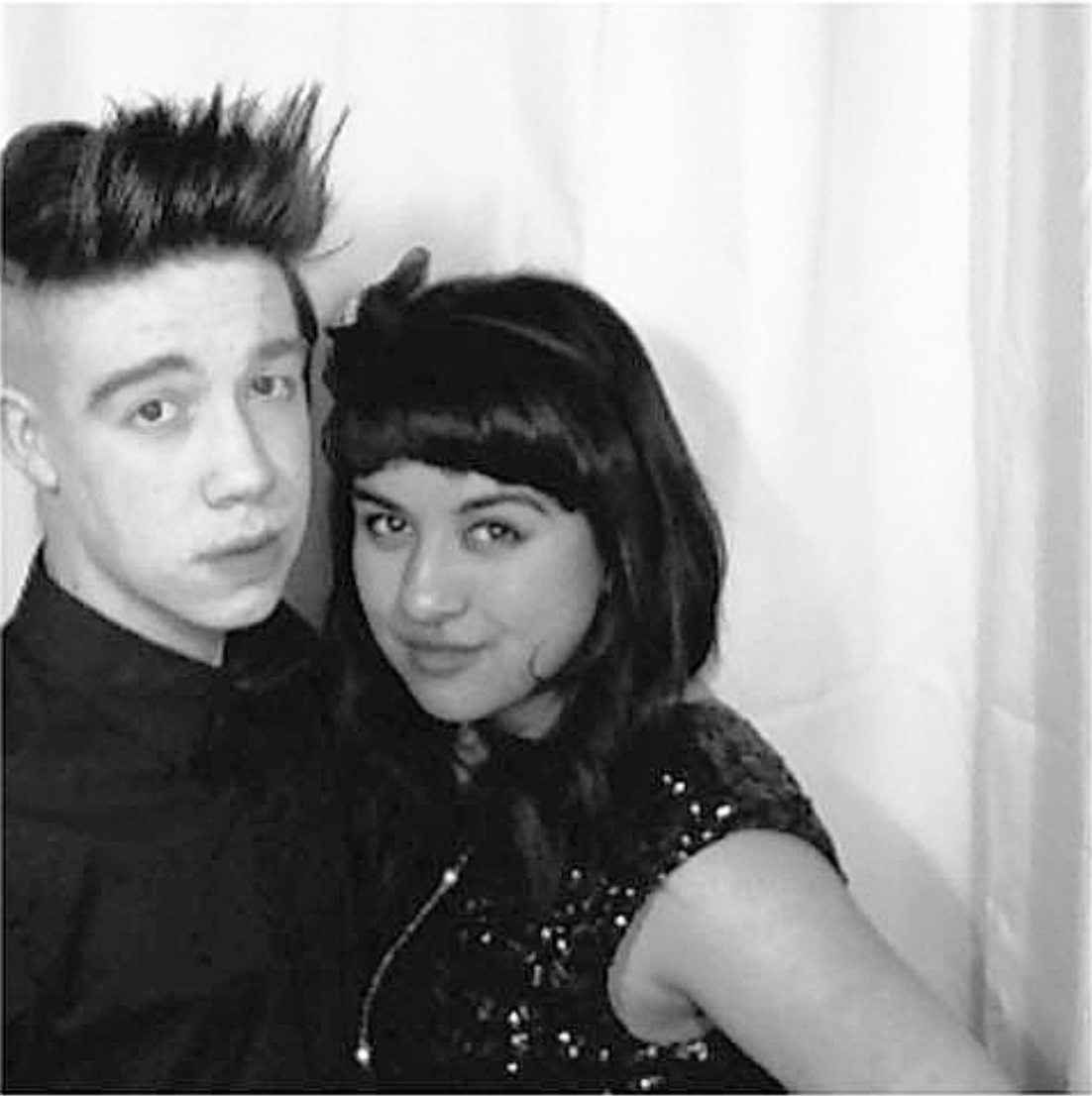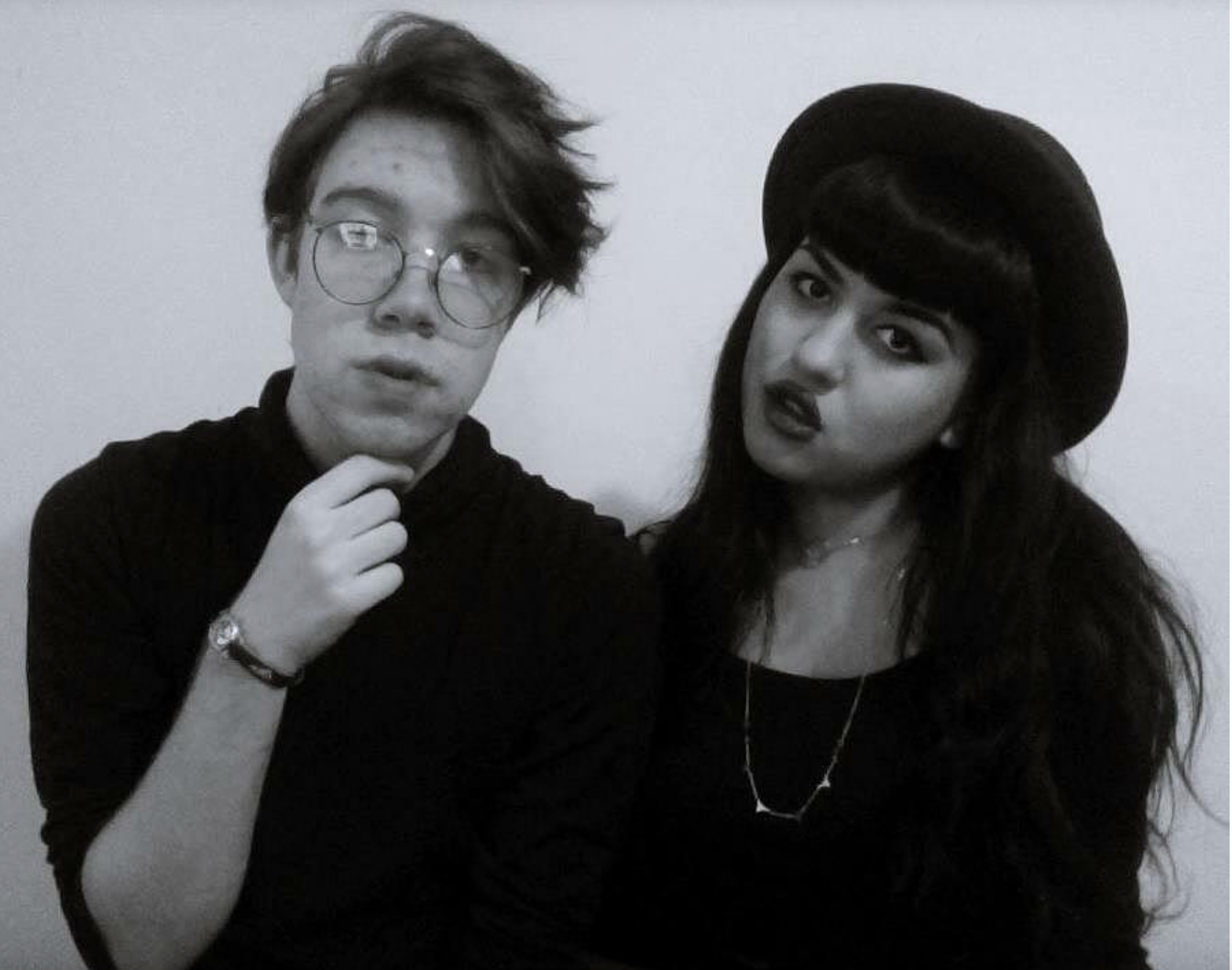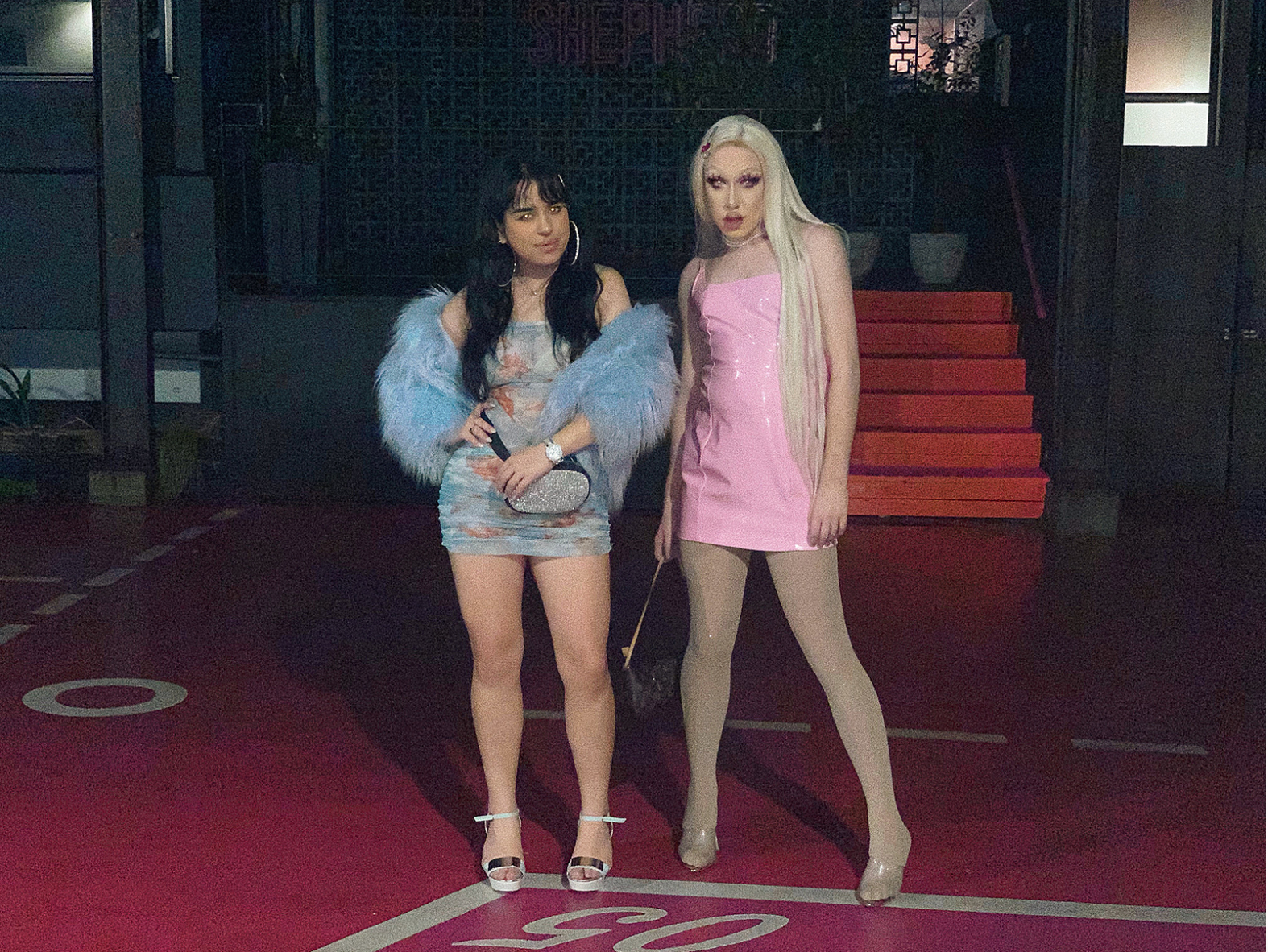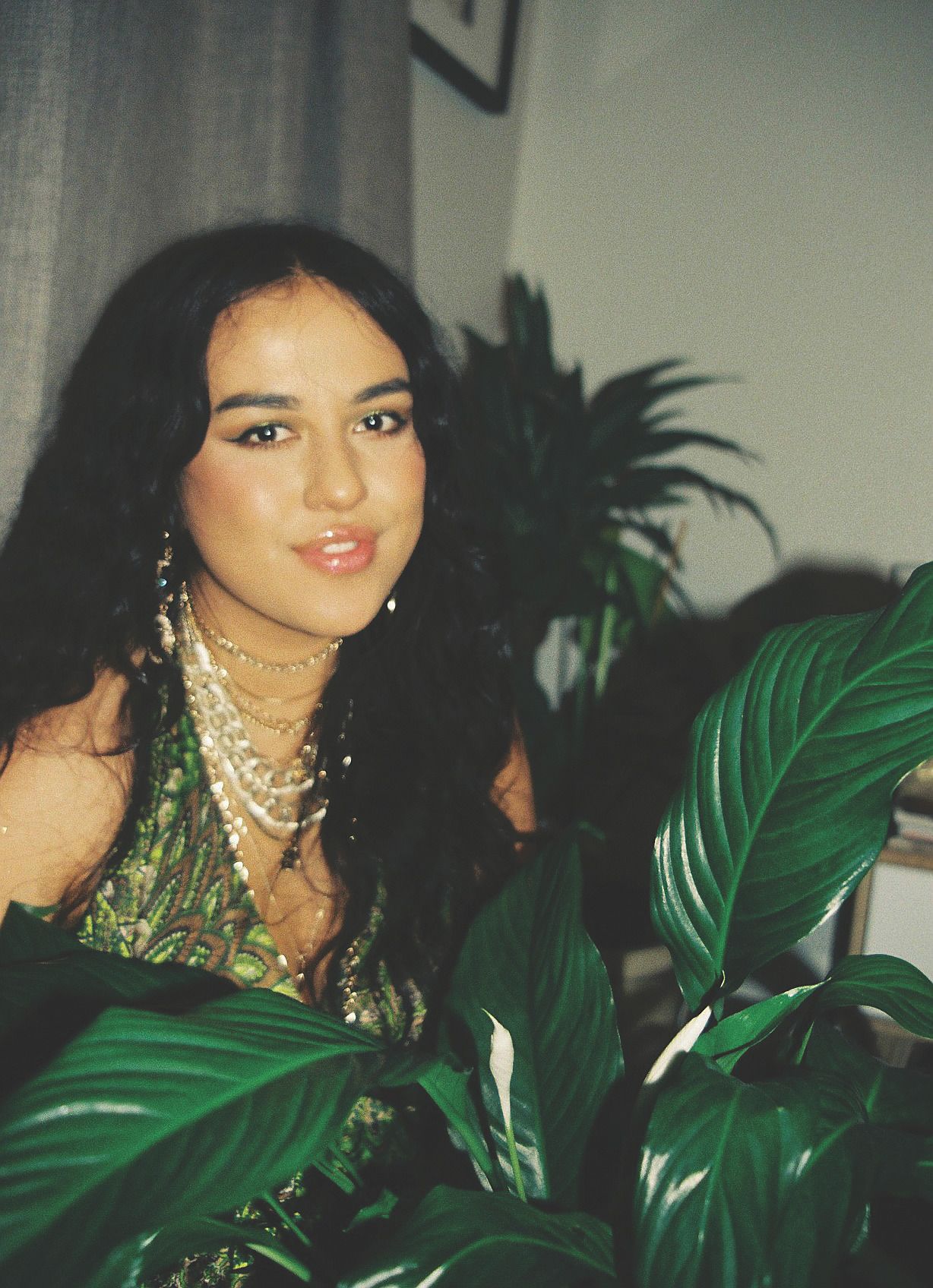On Girls and Gays
An essay by Tayi Tibble on that real hold-you-down-type love that grows between a gay and his girl.
They say that behind every great man there is a great woman, but likewise behind every great woman there is also a great man… a gay one. Tayi Tibble on that real hold-you-down-type love that grows between a gay and his girl.
Think Marc Jacobs and the Italian Godmother to an entire generation of naughty soft girls, Sofia Coppola. Think Ariana Grande and, idk, probably her brother Frankie. Think Kim Kardashian and the man responsible for Kim Kardashian, Mario. Think Real Housewife turned pop mama Erika Jayne and her creative director Mikey Minden, who coincidentally was also the gay influence behind The Pussycat Dolls. In the Aotearoa context, think Chris Tse and Gem Wilder. Think Colin Mathura-Jeffree and Shavaughn Ruakere (okay I made that up, but it’s my most desired ship of all time). Think Will and Grace, think Jack and Karen, think RuPaul and Michelle Visage.
The list goes on and on and on, and it goes on and on and on because it is a very real and significant phenomenon on which the entirety of the world is based. I’d throw down cold hard cash on the fact that behind every bad bitch there is a gay influence in her life, coordinating her outfits and coaxing out the spiritual thot in her. And vice versa – behind every gay queen there is a lil bitch yassing for her life and lending out her clothes. This is essentially how the world operates: economics, politics, the Instagram algorithm, you name it. Girls and gays rule the world. Once you understand and accept this dynamic you are on the path to enlightenment, and my first steps down this path were taken way back in 2006, in the one and only New York City.
Girls and gays rule the world. Once you understand and accept this dynamic you are on the path to enlightenment.
New York City circa 2006. It was the time of high fashion. It was ‘the’ place to be. It was the period before the Kardashians made being hot and braindead in California everyone’s major aspiration. Instead, the world’s ambitions were focused on the city that never sleeps. So in sleepy towns all around the world we dreamed of moving there and making it; climbing the corporate ladder, joining the glamorous lives of Manhattan’s elite and navigating sex and love with our cohort of equally gorgeous girlfriends. New York was the epicentre of glamour, and the city became a mecca for gays and girls to pay worship, adorning their bodies in designer and sacrificing their souls to the night via weekend-long benders of cocktails, house music and poppers.
I was only 11 years old at the time, and I lived in New York via an unrelenting series of New York-related TV shows, but the one that fully sold the lifestyle to me was ABC’s Ugly Betty.
Shout out to Ugly Betty. It was a gay fashion-girl fave, like Sex and The City and Gossip Girl except… gayer, and with more ethnic diversity. The protagonist, Betty Suarez, was a woman of colour. The antagonist, Wilhelmina Slater, was a woman of colour. Everyone else was gay. The show was diverse, and way ahead of its time. It explored themes such as image and celebrity, sexuality, solo parenting, transgenderism, immigration, racism, poverty and privilege. Although I have to admit that by our modern standards of wokeness, aka human decency, some of the treatment of these themes might be considered a lil crass and, um, problematic, but what wasn’t in 2006?
It affected wannabe fashion girls and gays all around the world, even here, in sleepy, polar-fleece-loving New Zealand.
At least Ugly Betty was daring, and held non-white, non-het characters in the centre. It was also hot, camp and crack-up af. It affected wannabe fashion girls and gays all around the world, even here, in sleepy, polar-fleece-loving New Zealand. It had all the delicious scandalous insight of what it might be like to work at a high-fashion magazine, and the ambience was perfect, right down to the white walls, mod orange chairs, celebrity cameos, and a secret sex room accessed through the wardrobe department for ilicit lunchtime rendezvous. Most importantly, the show had one of the most moving and dynamic portrayals of love and friendship. The show had Marc and Amanda.
Marc and Amanda where the stars of the show, repeat offenders when it came to scene stealing, and in my opinion, the pair had the most on-screen chemistry and charisma since Will and Grace’s Jack and Karen. They were the quintessential gay and girl duo who scammed, schemed and light-heartedly bullied their way through the ranks of the magazine. They bonded over being hot and spilling the tea, obviously, but most importantly, they supported each other’s dramas and aspirations as if they were their own. And behind the comedy of their superficial camp idiocy there was a touching unconditional friendship, free from the competitiveness or cattiness that can sometimes haunt female friendships, and free from the sexual tension that often plagues friendships between straight men and women where someone secretly, or worse openly, wants to bang the other. With Marc and Amanda there was none of that. There was only love. A specific and special kind of love. The love between a gay and his girl. The kind of love I am talking about is genuine, mutual and between equals.
Ask a gay man to describe his best girl friend and he will start describing her as if she is the most desirable woman on earth. It’s a beautiful display of the human heart. Ask an undisclosed gay at an undisclosed gay bar and you will be met with something along the lines of, “Omg yes! Her name is [play ‘God is a woman’ by Ariana Grande]. Blonde. Gorgeous. Sort of like, a pre-Raphaelite Venus, meets a young Britney Spears but if she was like, an Insta thot, but in a fitness, lululemon way. Karen Walker jewellery. Bougie bitch. But also so nice. So caring. Big heart. She just finished her law degree. Smart bitch. We met at our hall in first year. She owns a Louis Vuitton bag. She completes me, you know? Once Patrick Gower sat next to her on an Air New Zealand flight and he told her she was pretty.”
This kind of declaration of emotions – which would take years and years to wring out of a straight man, like a wet tea-towel – gay men offer up generously and willingly. In fact, long-term exposure to gay men, the gay gaze and gay praise has been know to increase your chances of developing both a) a long-term pop career, and b) a robust and healthy self esteem, especially if this exposure has been consistent from a young age. I know because it happened to me.
While some girls enter their womanhood seemingly overnight, returning from school holidays sunkissed and beautiful, suddenly inundated by the attention of boys, who orbit around them like they’re the sun, other girls, like me, reemerge from the deep, dark recesses of the internet with a new moodboard of niche pop interests, a vintage Moschino dress and two miscellaneous pills, and suddenly they attract the attention of at least one glamorous gay.
2011 was a particularly unfashionable year, if I recall it correctly.
In fact, it was Ugly Betty which served as one of the first pop-culture touchstones my true e hoa Raife and I bonded over when we first started to hang out in high-school art class circa 2011. 2011 was a particularly unfashionable year, if I recall it correctly. I remember a lot of printed leggings, which I believe is why I caught Raife’s eye as I wore six-inch bordello stilettos with my uniform and exclusively painted hot chicks as opposed to, like, the NCEA national requirements of landscapes, koru and cattle.
It was love at first sight, and like any true romance our friends were worried we were moving too quickly. Almost immediately we were leaving our individual desks behind us to sit outside in the sun, read magazines, play music off our prehistoric non-iPhones and talk about the important things in life: boys, celebrities and fashion. We traded likes and dislikes, aka our Tumblr urls, and very quickly discovered that our entire personalities were harmoniously made up of a plethora of stale pop-culture moments from the 2000s. We were twin souls softly haunted by images of Britney Spears with the snake, Nicky Watson on Celebrity Treasure Island, when Kanye called out white supremacy, and that time on Ugly Betty when Marc inadvertently encouraged Amanda to deliver an impassioned performance of ‘Milkshake’ by Kelis at Wilhelmina Slater’s wedding. It was a great TV wedding. Victoria Beckham was a bridesmaid.
But even at the dense and dumbass age of 16 I had an understanding that there was something different about the way R and I consumed and dissected pop culture. Something to do with representation, with trying to find ourselves, with trying to find some idea of who we might like to be by way of analysing and collecting icons.
There was something different about the way R and I consumed and dissected pop culture. Something to do with representation, with trying to find ourselves, with trying to find some idea of who we might like to be.
In Ugly Betty, I related to something in Betty Suarez, the wannabe writer from Queens thrust into the skinny white world of fashion as well as the skinny white world of the world. I related to something in Wilhelmina Slater, the ultimate top, whose characterisation as a total bitch stemmed from having to excel in the world as a woman of colour, competing against the white het male editor-in-chief (Daniel Meade), whose only qualification that gave him the role over her was a degree in nepotism. And despite personally being ugly at the time, I also found myself relating to Amanda, an attractive young woman who was constantly being underestimated and written off as dumb because of her looks.
R remembers watching a specific scene in Ugly Betty with his mum. In this scene, Justin, Betty’s young gay nephew, has his first kiss with a boy. Raife recalls watching the kiss and reddening with recognition. He remembers feeling his mothers eyes burning into him, observing his reaction. But while mortifying, he also recalls that this moment was liberating, as he saw himself reflected and validated for the first time in the media he was consuming. Raife was the only openly gay student at our high school. And when I say openly gay, I should also say confidently gay.
You’re lucky in life if you find a friend who encourages you to wear sky-high stilettos to high school, but you are blessed by the gay gods if you find a friend willing to be your accomplice in stealing Doc Martens and denim jackets from the drama department and customising them beyond the drama teacher’s recognition. A partner in fashion crimes committed against the good people of small-town New Zealand. And when the people all rise up, with pitchforks and matching polar fleece, keen to cut your tall-poppy self down to size by way of anonymously messaging you that you “dress like a prostitute” or are “a fashion alien from hipster planet”, you have an advocate, a defence attorney, someone to help you sashay away from the haters and look cute while you do it. That’s what Raife was to me, and we helped each other plot and scheme our way through life with a glamorous swagger. It might not have been the cut-throat world of a high-fashion magazine in New York City, but it was a Porirua high school so it was much, much worse.
In some ways our relationship might have been labelled as enabling. Together there was nothing we couldn’t do, and we did a lot of things we probably shouldn’t have. The details of which are withheld. Even now, we sometimes find our eyes meeting in high-stakes situations where we’re like, wtf, how did we get here, did we yass each other too hard? But I also think when you’re a young girl or a young gay man in a white het male society that is not set up with you in mind, friendships that give you permission to live your best life become incredibly precious.
I often joke that dressing for gay men liberated me as a woman. It’s a joke, but it’s not a joke. My specific taste in apparel, based on an early exposure to video vixens, can often inspire side eye and gross leering, but the gays see me for the pure talented angel that I am and go loco for my intellectual fashion references and over-coordinated looks. One time I sent a photo of myself to my friend and he thought it was so pretty that it made him cry! Seriously! Weird flex I know, but that type of admiration and aroha in straight culture is typically reserved for your wedding – if you’re lucky and your man has serious Pisces or Cancer placements. Anyway, that shit felt nice. It was the proudest I have ever been in my life.
Just because you’re not lovers doesn’t mean you can’t be soulmates.
“I’m a very lucky gal to have such a good friend,” says Michelle ‘The Face’ Visage. You may know her from her giant titties and her position as a judge on every white girl’s entry point into gay culture, RuPaul’s Drag Race, both of which arguably make her the most powerful fruitfly in the entire gay world. Speaking of RuPaul, she explains that there are “soulmates on different levels – just because you’re not lovers doesn’t mean you can’t be soulmates. Ru’s my soulmate as a best friend; we complete each other in many ways.”
Not often, but every now and then, briefly and always in passing, I think to myself, as a skux af player, that it might be nice to find a real ride-or-die, Bonnie-and-Clyde-type man. A man who is on that same hustler ‘stack that paper and make sure everybody has a plate’ mentality as me. But then I remember I already have that kind of love and support in my life, and how lucky I am to have found the Destiny’s Child ‘hood boy who’s good to me with street credibility’ soldier that I have always dreamed about. And like Michelle says, just because you aren’t lovers doesn’t mean you can’t be soulmates. Platonic love can be just as significant and fulfilling as romantic love.
And the couples we grew up watching, Jack and Karen, Ru and Michelle, Marc and Amanda, are examples of this. Of this real hold-you-down type of love that can grow between a gay and his girl. These characters also showed that being a gay or a young girl in this world wasn’t inherently disadvantaged or sad or even fringe and on the outskirts. These couples showed that we can exist, as ourselves, in the action, in the midst of fun and glamour, at the heart of the party. And while the overwhelming majority of popular culture was and still remains mostly het, white and zzz, awareness of this lack of representation also makes you aware of what you have to be grateful for and you learn to adopt, co-opt, uplift, and celebrate the parts and bits that do – with style and certified pop bangers. Raife knows that while representation of queer characters were limited, characters like Marc, and Justin, and the queens on RuPaul’s Drag Race, were part of the support that allowed him to be out and about as himself at a young age. The same could not be said for LBGTQ kids growing up in New Zealand even ten years earlier.
Raife is now a popular Wellington drag queen, Bunny Holiday. You may have seen her on TVNZ’s Haus of Drag, where irrelevant to her Cancer moon tears and questionable “I’m gonna get her” threats towards other competitors, she served look after look in Moschino. And, if we are going to be completely honest with ourselves as a nation, she was also the only queen to dress appropriately for each challenge (a pink PVC two-piece for tennis, a Juicy Couture tracksuit for yoga, opera gloves for pool – ugh, so inspired). Watching her on TV, I felt my chest burn with pride. Tears of years and years of dreaming and ambition threatened to well in my eyes and I was like, oh, this must be what having a child feels like, that same unconditionally fierce kind of love.
I thought about the way we used to watch shows like Ugly Betty, Will and Grace, RuPaul’s Drag Race and what that meant. I thought about how now, maybe somewhere, at some dumb little school, a lil gay might be watching him and feeling the same way we used to feel as we read Fashion Quarterly and Teen Vogue and Rookie magazine when we should have been reading, idk, Orwell or something. How we talked and talked about how we would live in a city apartment with racks and racks of clothes, how cool we would be. Of course those were just silly dreams of two spotty suburban teenagers, but the problem with dreams is that they can also come true. And that small ginger bitch of a boy I met in art class and watched every episode of Ugly Betty with has blossomed into a big blonde gay icon, an it girl on some real hot girl shit. And my heart fills with aroha, with that special and specific gay and girl love, when I think about how he used to try on my heels in the drama closet and now he’s out and about in his own.
Feature image: Amanda, Marc and Betty, from Ugly Betty.

